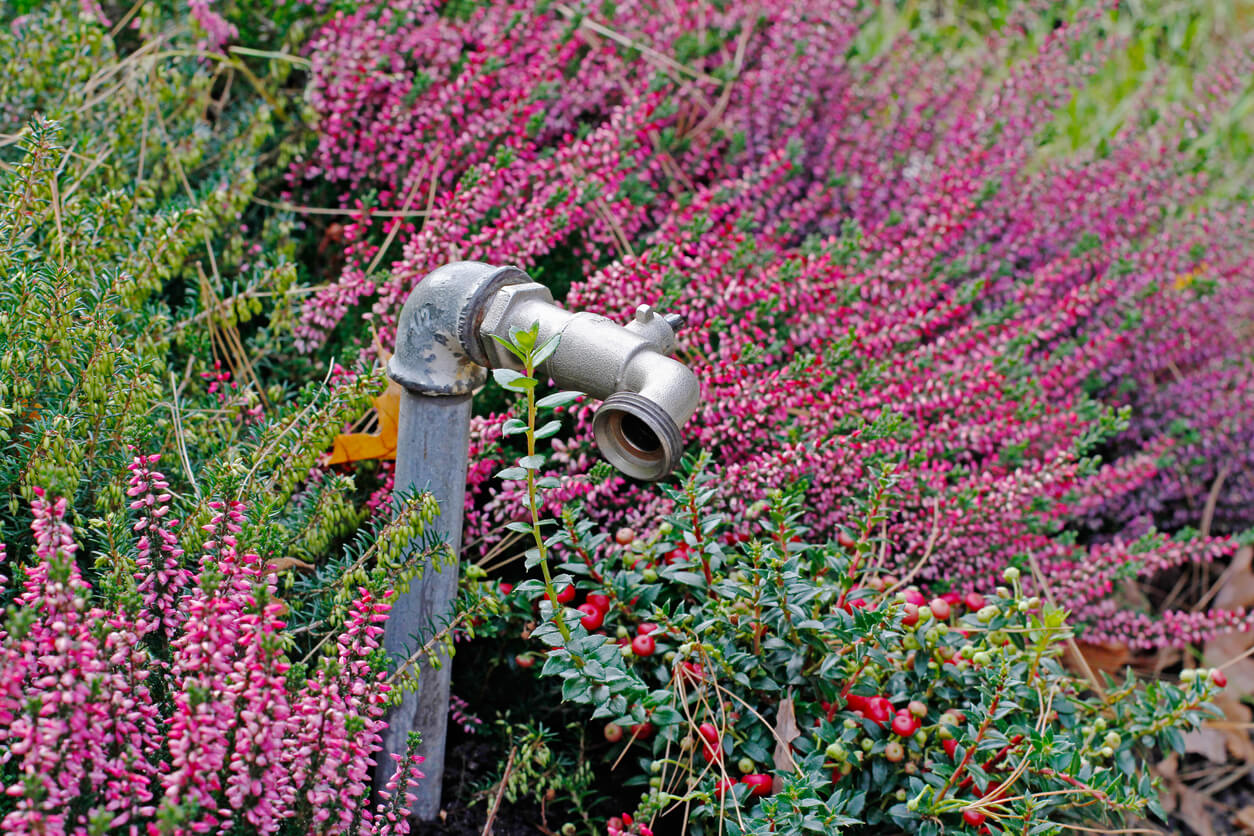
Faucet for watering cranberry and heather
Watering Your Cranberry Plants
Once your cranberries are settled in—whether it’s in a container, a raised bed, or open ground—consistency is key when it comes to watering. If you don’t get rain on a regular basis, go out and give your cranberries a good drink of water. Cranberries like soil that’s moist, but not soggy. Don’t kill your cranberry plants with kindness. Water, yes—just not too much.
In general, water deeply about once a week, so your cranberry vines get about an inch of water. If the top of the soil is just a little dry, that’s OK. But never, ever let the soil dry out. It’s a good idea to check on your vines daily, or at least every other day.
It’s always best to water in the morning, so your plants can soak up the water and put it to work. Watering earlier in the day also gives the sun time to burn off any water on the leaves. When you water, aim for the base of the plant. Try not to soak the leaves (unless you’re blasting off pests); that can expose the plant to fungal infection.
Weeding Your Cranberry Plants
If you’ve planted in raised beds or containers, weeds shouldn’t be much of a problem. If you see weeds, pull them up early and often—but be gentle about it. Keep in mind that cranberry roots only go down about 6 to 8 inches. Loosen the soil gently around your plants, especially when they’re young, so you don’t disturb their roots. For raised beds and containers, this is another good reason to get yourself some fresh garden soil; it’s one less aggravation to deal with during the growing season.
If you’re growing your cranberries directly in the open ground, properly preparing your soil is still an excellent preventive measure against the emergence of weeds. When you till or cultivate the area where you’ll plant your cranberries, remove all weeds and debris.
Cranberry vines do not compete well with weeds. One of the best ways to protect cranberry vines against the emergence of weeds is one of the oldest: sand. Lay down a layer of sand a couple inches deep. The sand actually does double duty: It suppresses weed growth and retains moisture, especially in the top layer of the soil. And water—whether it’s rainwater or from your hose or irrigation system—can still pass through easily to get to the plant’s roots.
Fertilizing Your Cranberry Plants
In general, cranberries do not require much fertilizer beyond the soil preparation when you first plant them. After that, you can apply fertilizer in the early spring around plants that are one to three years old. Use a slow-release 5-10-10 fertilizer, and spread a handful in a circle around each plant every three to four weeks. Don’t fertilize past the end of June.
Pruning Your Cranberry Plants
Once your cranberry vines are established, they’ll send out runners; it’s from those runners that you’ll get new uprights with flowers that will ultimately make way for cranberries. Once a season, get a rake and gently pull all the loose runners in the same direction. Cut back any runners that are more than 6 feet long. That will keep your cranberry patch neater, and the pruning will encourage the runners to put down roots and send up some new uprights. And that means more cranberries for you!
How often do you water, fertilize, weed, or prune your cranberries? Do you have any particular challenges growing cranberries? Please tell us your tips for nurturing healthy cranberries by commenting below.


 Previous
Previous

